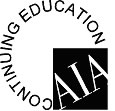Introduction to Fire Protection Systems
AIA HSW
Lawrence J. Marchetti, P.E.
|
This
program is registered with the AIA/CES for continuing professional
education. As such, it does not include content that may
be deemed or construed to be an approval or endorsement
by the AIA of any material of construction or any method
or manner of handling, using, distributing, or dealing in
any material or product. Questions related to specific materials,
methods, and services will be addressed at the conclusion
of this presentation.
|
|
 |
PDH Online | PDH Center
5272 Meadow Estates Drive
Fairfax, VA 22030-6658
Phone & Fax: 703-988-0088
www.PDHonline.com
www.PDHcenter.com
An
AIA/CES Registered Continuing Education Provider (#J681)
|
|
Course Overview
The Introduction
to Fire Protection Systems Course is designed to provide the student with a
fundamental understanding of the basics of combustion; codes and standards related
to fire protection; a discussion of water based fire extinguishing systems focusing
on sprinkler systems; a discussion of non-water based and special application
fire suppression systems; and concludes with a discussion of various fire detectors.
The course is divided
into five (5) modules which can be studied in any desired sequence. Each module
concludes with a quiz to reinforce student comprehension of the material. A
sixth module is provided with a list of internet resources which can be used
by the student to reinforce the material presented.
This course includes
a True-False quiz at the end.
Learning
Objective
Following successful
completion of six modules, the student should be able to:
- Define the
combustion process, name the (5) classes of fires, and understand the concept
of the fire tetrahedron.
- Have a fundamental
understanding of pyrolysis and the theory of explosions.
- Cite the main
U.S. fire protection codes, and the standards for fire protection systems.
- Cite an internationally
recognized testing laboratory that tests components and systems for fire protection.
- Cite an insurance
.comanization involved in the research and approval of fire protection equipment
and systems.
- List the fundamental
difference between NFPA and insurance company codes.
- Describe the
various occupancy fire hazard classifications as defined by NFPA and cite
examples.
- Provide the
basic definition of a sprinkler system.
- List basic sprinkler
system components and identify the function of each.
- Have a fundamental
understanding of the concept of sprinkler k-factor.
- List the three
major sources of water for sprinkler systems.
- List the main
fire extinguishment mechanism associated with each type of system.
Course
Content
This course consists of the following five course modules.
Course Modules
MODULE 1- OVERVIEW OF THE COMBUSTION PROCESS
MODULE 2- OVERVIEW OF THE CODES AND STANDARDS RELATED TO FIRE PROTECTION SYSTEMS
MODULE
3 PART I- WATER BASED FIRE PROTECTION SYSTEMS
MODULE
3 PART II- WATER BASED FIRE PROTECTION SYSTEMS
MODULE 4- NON-WATER BASED FIRE PROTECTION SYSTEMS
MODULE 5- FIRE DETECTION DEVICES
The course content
is in PDF format in each module. You need to open or download those documents
to study this course.
Additional
Learning Resources
MODULE 6- ADDITIONAL LEARNING RESOURCES
Once you finish studying
the above course content you need to
take a quiz to obtain the PDH credits.

DISCLAIMER: The materials
contained in the online course are not intended as a representation or warranty
on the part of PDH Center or any other person.comanization named herein. The materials
are for general information only. They are not a substitute for competent professional
advice. Application of this information to a specific project should be reviewed
by a registered architect and/or professional engineer/surveyor. Anyone making
use of the information set forth herein does so at their own risk and assumes
any and all resulting liability arising therefrom.